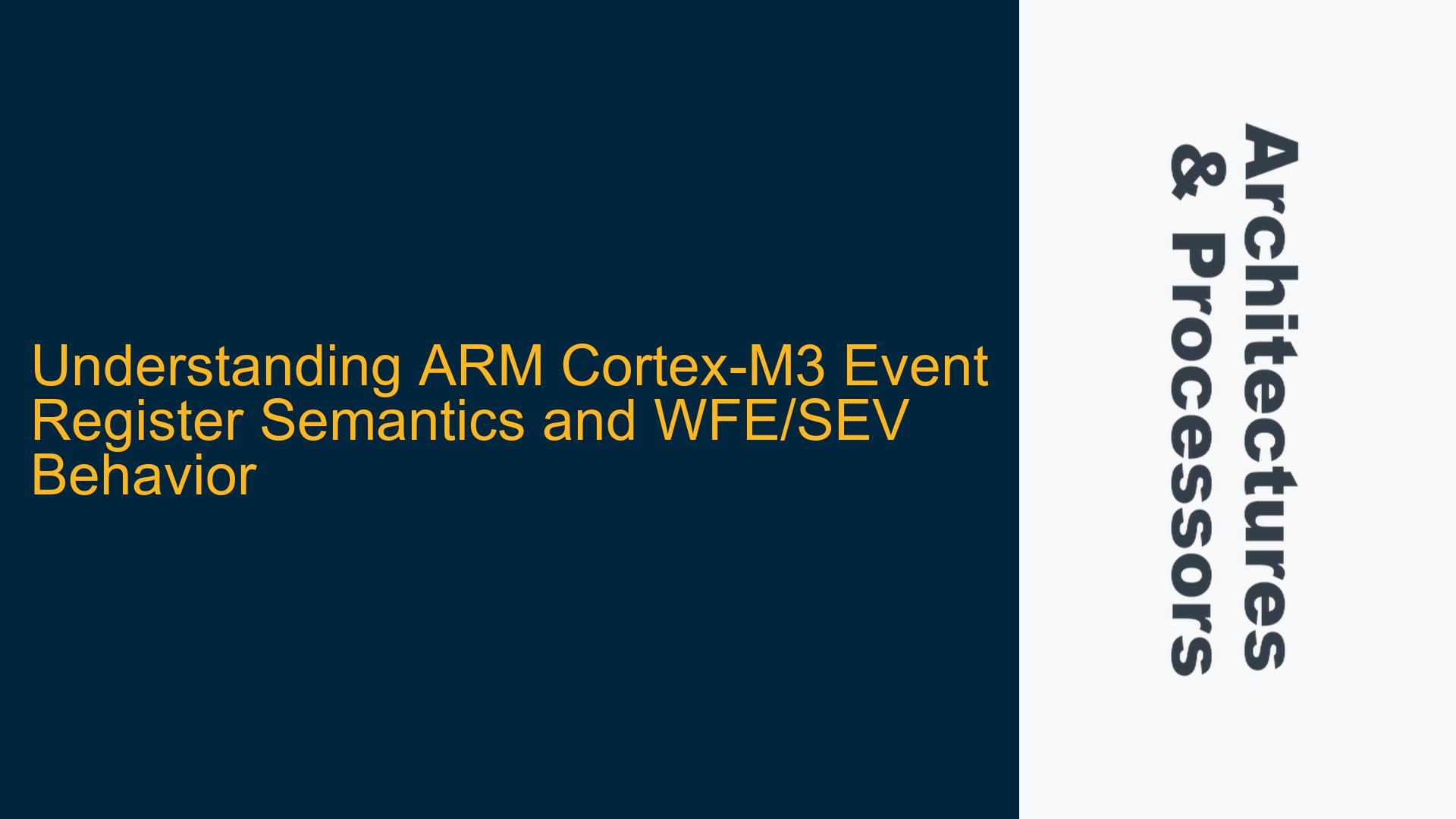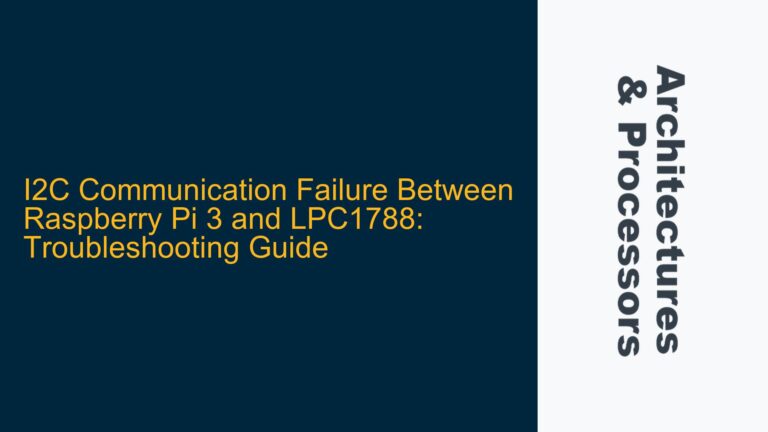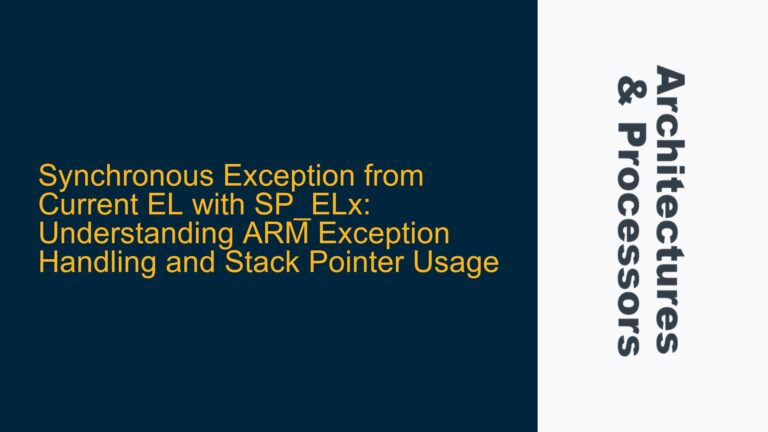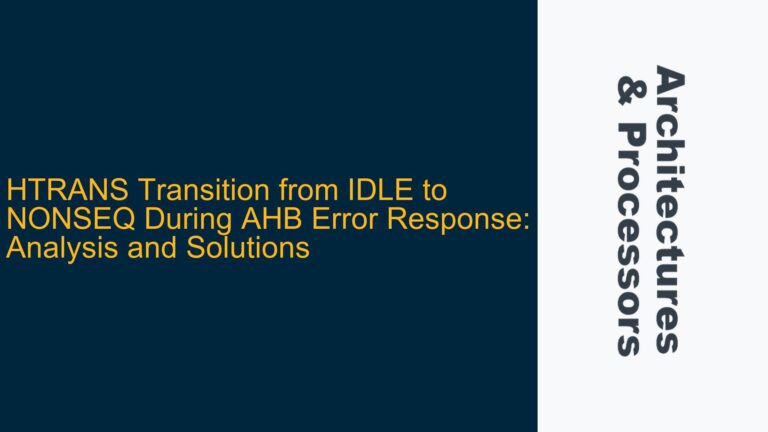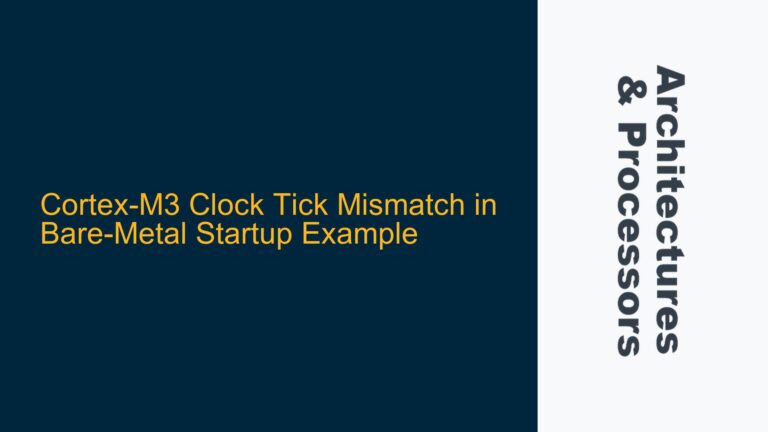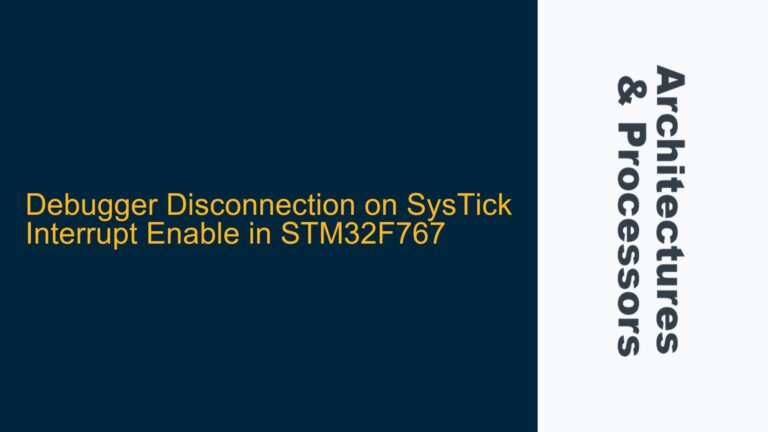ARM Cortex-M3 Event Register Behavior During WFE and SEV Operations
The ARM Cortex-M3 processor includes a 1-bit Event Register (ER) that plays a critical role in managing low-power modes and synchronization between threads or interrupts. The Event Register is closely tied to the Wait For Event (WFE) and Send Event (SEV) instructions, which are used to control the processor’s sleep and wake behavior. A common misconception is that the Event Register operates like a binary semaphore, where WFE acts as a "P" operation (decrementing the semaphore) and SEV acts as a "V" operation (incrementing the semaphore). However, the Event Register’s behavior deviates from this model in subtle but important ways.
The Event Register is set to 1 under the following conditions: when an SEV instruction is executed, when an interrupt service routine (ISR) is triggered, or when a debug event occurs. When a WFE instruction is executed, the processor checks the Event Register. If the Event Register is 1, it is cleared to 0, and the processor continues execution without entering a low-power state. If the Event Register is 0, the processor enters a low-power state until an event occurs (e.g., an SEV instruction, an ISR, or a debug event).
The key difference from a binary semaphore is that the Event Register does not maintain a queue of waiting threads or track the number of events. Instead, it acts as a simple flag that is either set or cleared. This means that if multiple SEV instructions or ISRs occur while the processor is not in a low-power state, the Event Register remains set to 1, and subsequent WFE instructions will clear it without causing the processor to wait.
Misalignment Between Event Register and Binary Semaphore Semantics
The confusion arises from the assumption that the Event Register behaves like a binary semaphore, where the "P" operation (WFE) would block if the semaphore is already 0, and the "V" operation (SEV) would increment the semaphore or unblock a waiting thread. In reality, the Event Register does not implement this queuing or counting mechanism. Instead, it acts as a transient flag that is set by events and cleared by WFE.
For example, consider the following sequence of operations:
- WFE() – The processor checks the Event Register. If it is 1, it is cleared to 0, and execution continues. If it is 0, the processor enters a low-power state.
- SEV() or an ISR – The Event Register is set to 1.
- WFE() – The processor checks the Event Register. Since it is 1, it is cleared to 0, and execution continues without waiting.
In this sequence, the second WFE does not cause the processor to wait because the Event Register was set to 1 by the SEV or ISR. This behavior is inconsistent with the binary semaphore model, where the second WFE would block if the semaphore were already 0.
The root cause of this misalignment lies in the design goals of the Event Register. It is intended to provide a lightweight mechanism for waking the processor from low-power modes, rather than implementing a full synchronization primitive like a semaphore. As a result, it does not track the history of events or maintain a queue of waiting threads.
Correct Usage of WFE and SEV for Low-Power Mode Management
To properly use the WFE and SEV instructions in conjunction with the Event Register, developers must understand its transient nature and avoid relying on it for complex synchronization tasks. Here are the steps to ensure correct usage:
-
Initialization: Before entering a low-power mode, ensure that the Event Register is cleared. This can be done by executing a WFE instruction while no events are pending. This ensures that the processor will enter a low-power state on the next WFE.
-
Event Generation: Use SEV instructions or ISRs to set the Event Register when an event occurs that should wake the processor. Note that multiple SEV instructions or ISRs will not "stack" events; the Event Register will remain set to 1 until it is cleared by a WFE.
-
Low-Power Mode Entry: Use the WFE instruction to enter a low-power state. If the Event Register is 1, it will be cleared, and the processor will continue execution. If the Event Register is 0, the processor will enter a low-power state until an event occurs.
-
Event Handling: After waking from a low-power state, handle the event that caused the wake-up. If multiple events can occur, use additional synchronization mechanisms (e.g., semaphores or message queues) to track and process them.
-
Avoiding Race Conditions: Be aware of race conditions that can occur if an event is generated after the Event Register is checked but before the processor enters the low-power state. To mitigate this, use memory barriers or disable interrupts around the WFE instruction.
-
Debugging and Testing: Use debugging tools to monitor the state of the Event Register and verify that the processor enters and exits low-power modes as expected. This can help identify issues with event timing or incorrect usage of WFE and SEV.
By following these steps, developers can effectively use the Event Register, WFE, and SEV instructions to manage low-power modes on the ARM Cortex-M3 processor while avoiding the pitfalls associated with its non-semaphore-like behavior.
Detailed Analysis of Event Register Behavior
To further clarify the behavior of the Event Register, let’s examine its interaction with WFE and SEV in different scenarios. The following table summarizes the outcomes of various sequences of operations:
| Sequence of Operations | Event Register State | Processor Behavior |
|---|---|---|
| WFE() | 0 | Enters low-power state |
| SEV() → WFE() | 1 → 0 | Continues execution without waiting |
| WFE() → SEV() → WFE() | 0 → 1 → 0 | Enters low-power state, then continues |
| WFE() → ISR → WFE() | 0 → 1 → 0 | Enters low-power state, then continues |
| SEV() → SEV() → WFE() | 1 → 1 → 0 | Continues execution without waiting |
| WFE() → SEV() → SEV() → WFE() | 0 → 1 → 1 → 0 | Enters low-power state, then continues |
From this table, we can observe the following key points:
- The Event Register is set to 1 by SEV or an ISR, regardless of its previous state.
- The Event Register is cleared to 0 by WFE if it was 1, allowing the processor to continue execution.
- Multiple SEV instructions or ISRs do not change the Event Register’s state if it is already 1.
- The processor only enters a low-power state if the Event Register is 0 when WFE is executed.
Practical Implications for Firmware Design
Understanding the Event Register’s behavior has important implications for firmware design, particularly in systems that rely on low-power modes. Here are some practical considerations:
-
Event Polling: If the processor needs to poll for events while in a low-power mode, ensure that the Event Register is cleared before entering the mode. This can be done by executing a WFE instruction in a loop until the Event Register is 0.
-
Interrupt-Driven Wake-Up: Use interrupts to wake the processor from low-power modes. Ensure that the ISR sets the Event Register to 1, either explicitly or implicitly, to allow the processor to continue execution after handling the interrupt.
-
Synchronization Primitives: For tasks that require more complex synchronization, use additional primitives such as semaphores or message queues. These can be used in conjunction with the Event Register to manage task scheduling and resource sharing.
-
Power Management: Optimize power consumption by minimizing the time spent in active mode and maximizing the time spent in low-power modes. Use the Event Register to wake the processor only when necessary, and ensure that events are handled efficiently.
-
Debugging and Profiling: Use debugging tools to monitor the processor’s power state and the state of the Event Register. This can help identify inefficiencies or errors in the power management logic.
By incorporating these considerations into firmware design, developers can leverage the ARM Cortex-M3’s low-power capabilities while avoiding common pitfalls associated with the Event Register’s behavior.
Conclusion
The ARM Cortex-M3 Event Register, while simple in concept, requires careful understanding to use effectively in low-power mode management. Its behavior differs from that of a binary semaphore, and developers must account for its transient nature when designing firmware. By following the guidelines and troubleshooting steps outlined in this post, developers can ensure reliable and efficient operation of their Cortex-M3-based systems.
